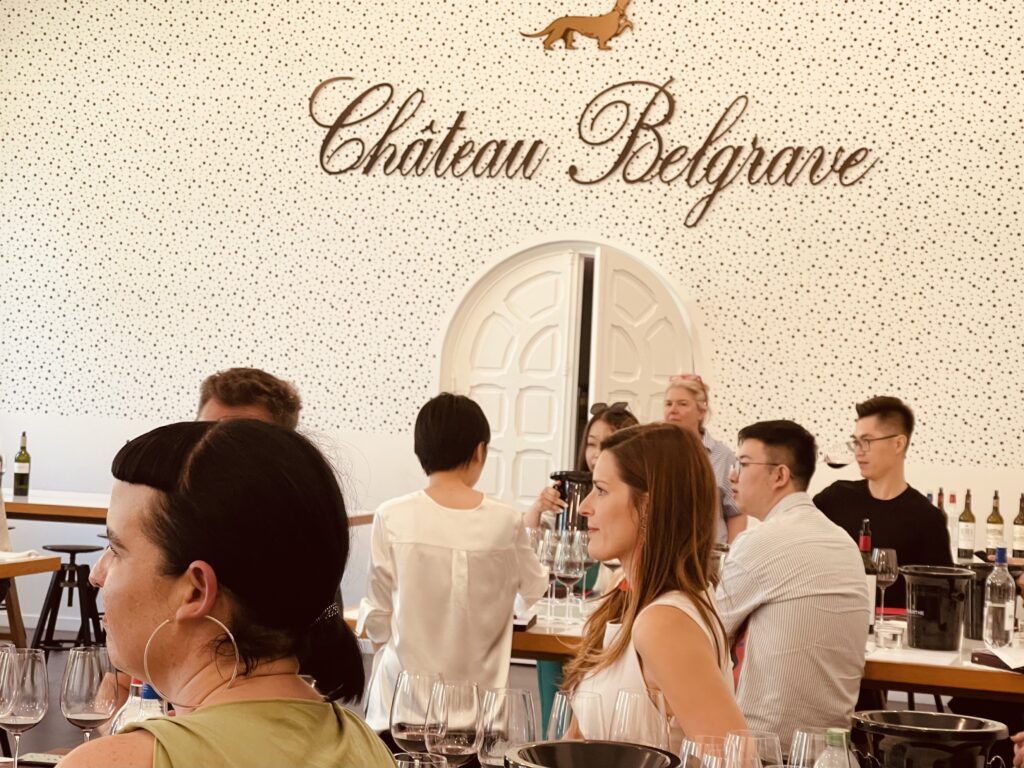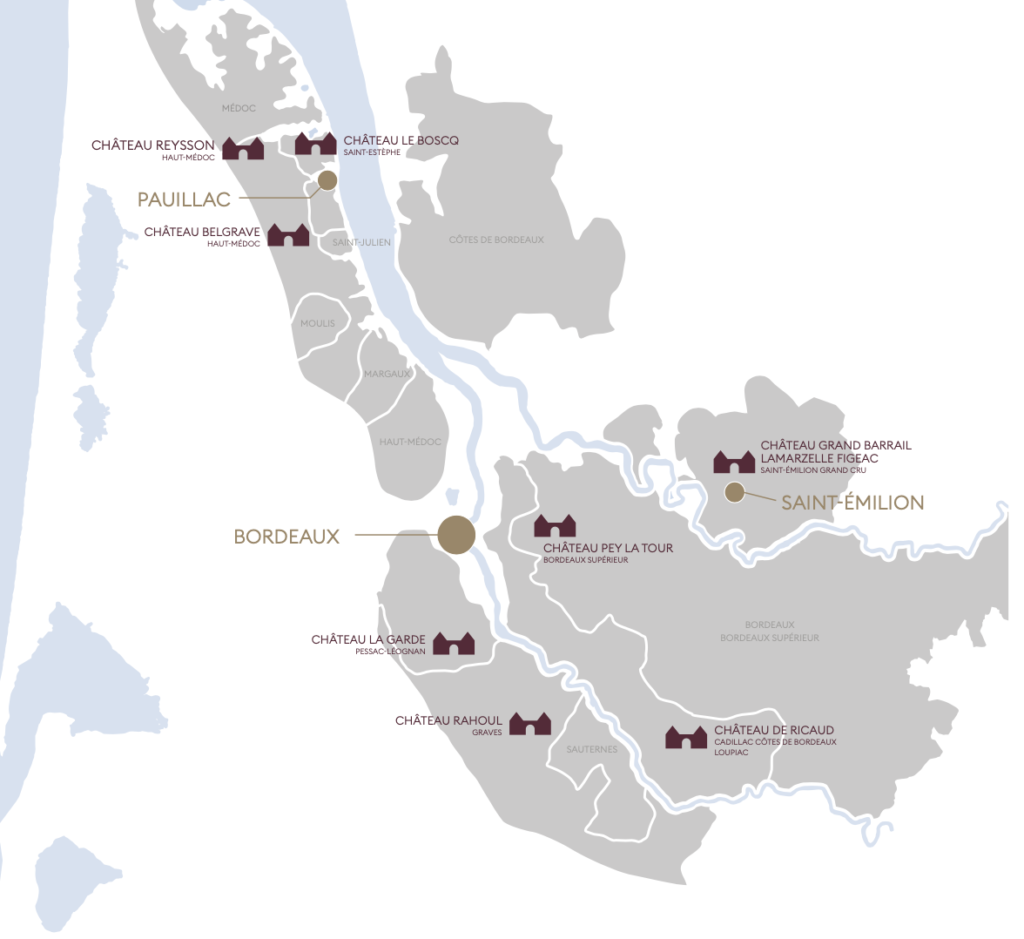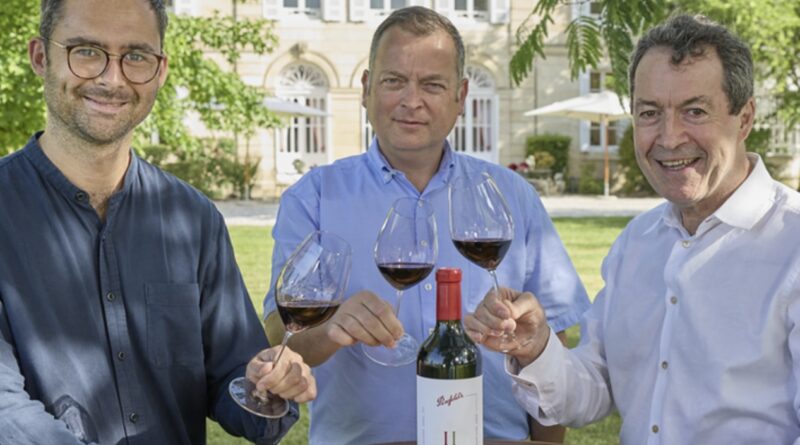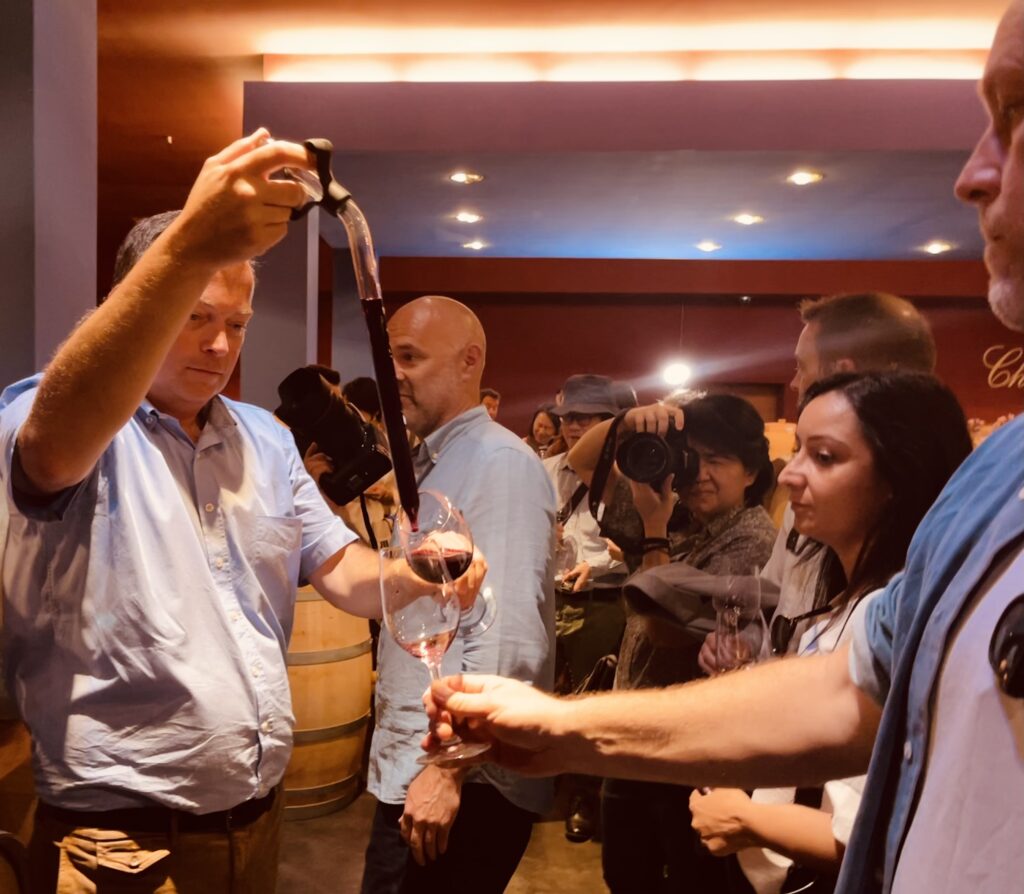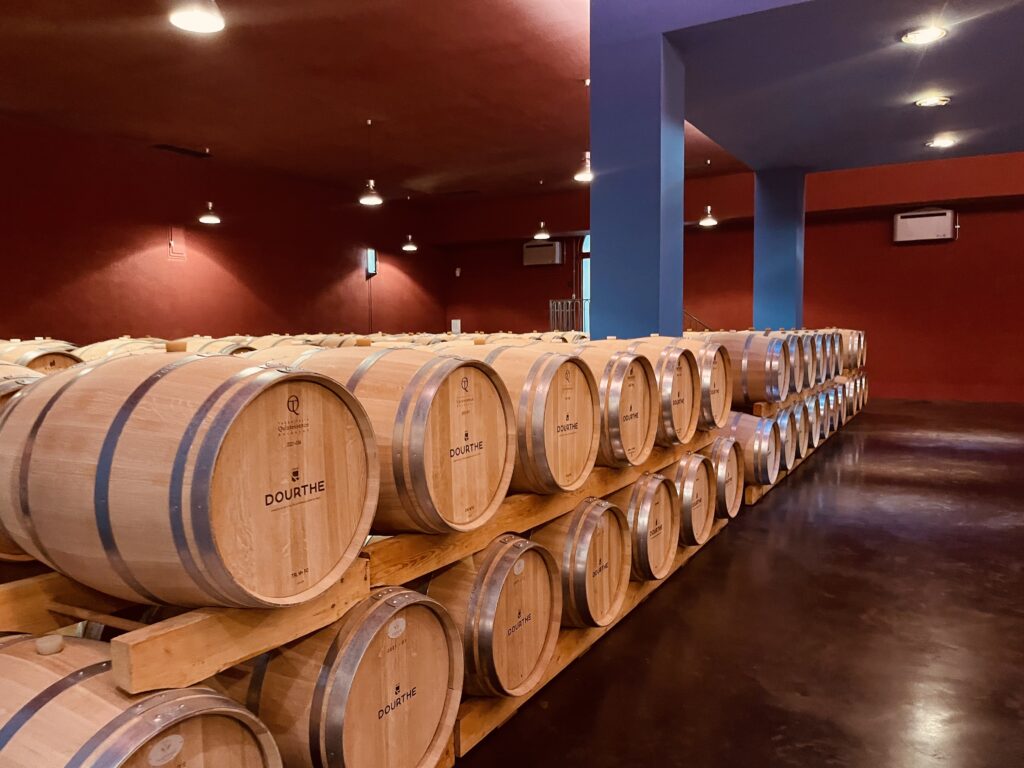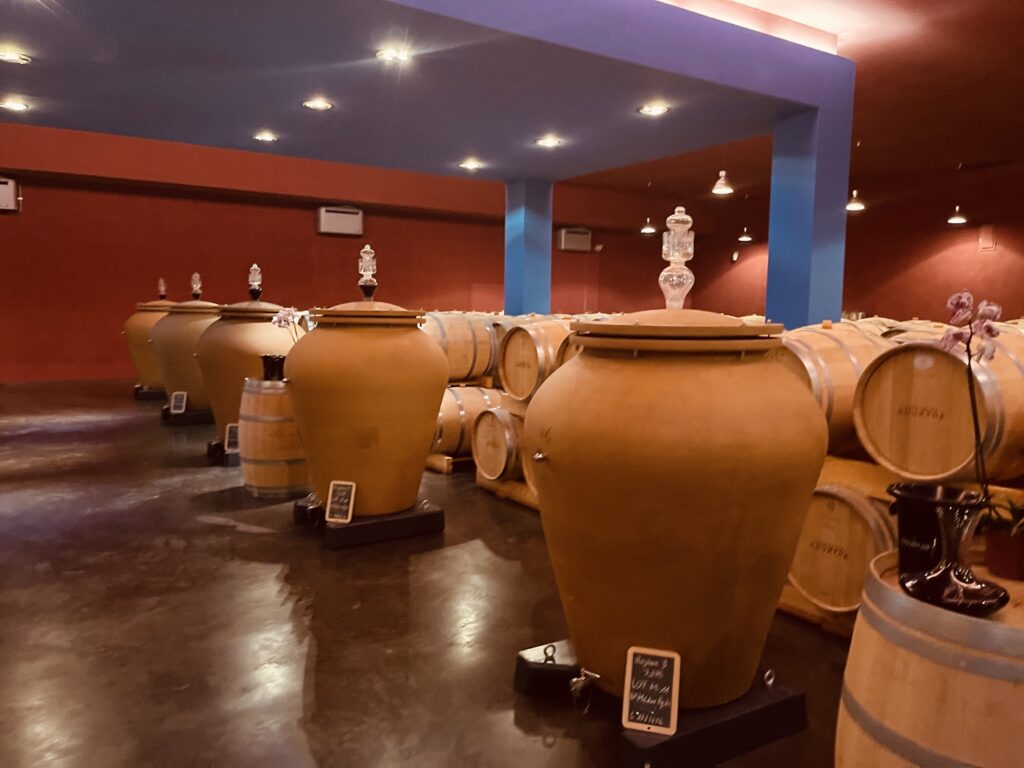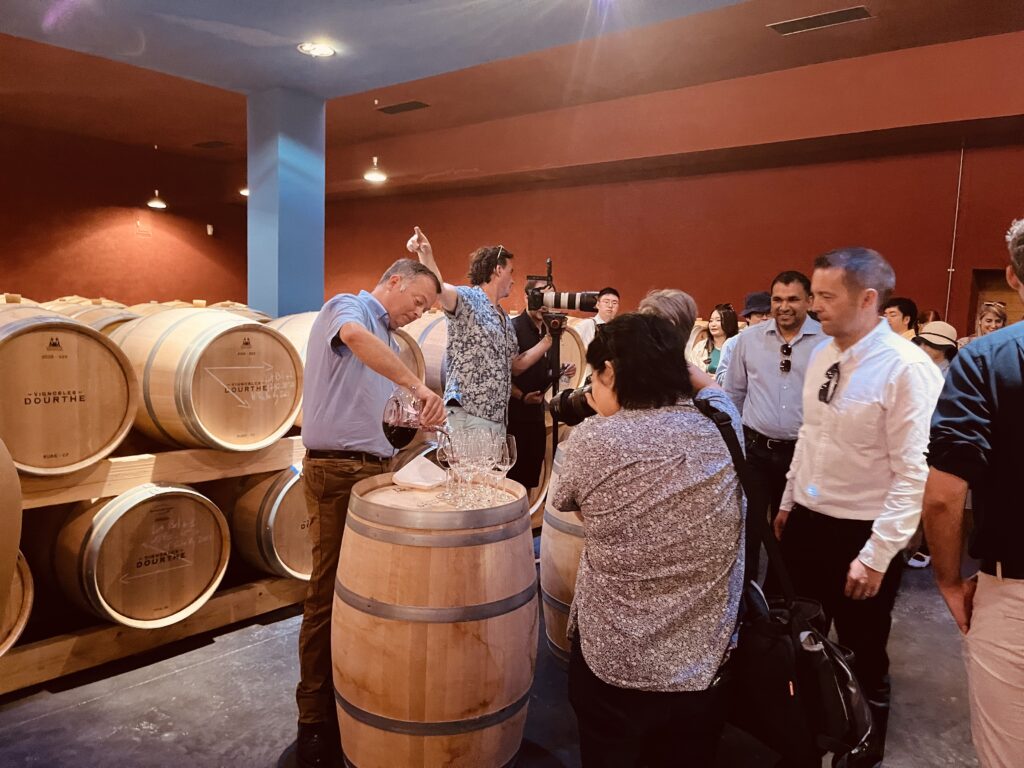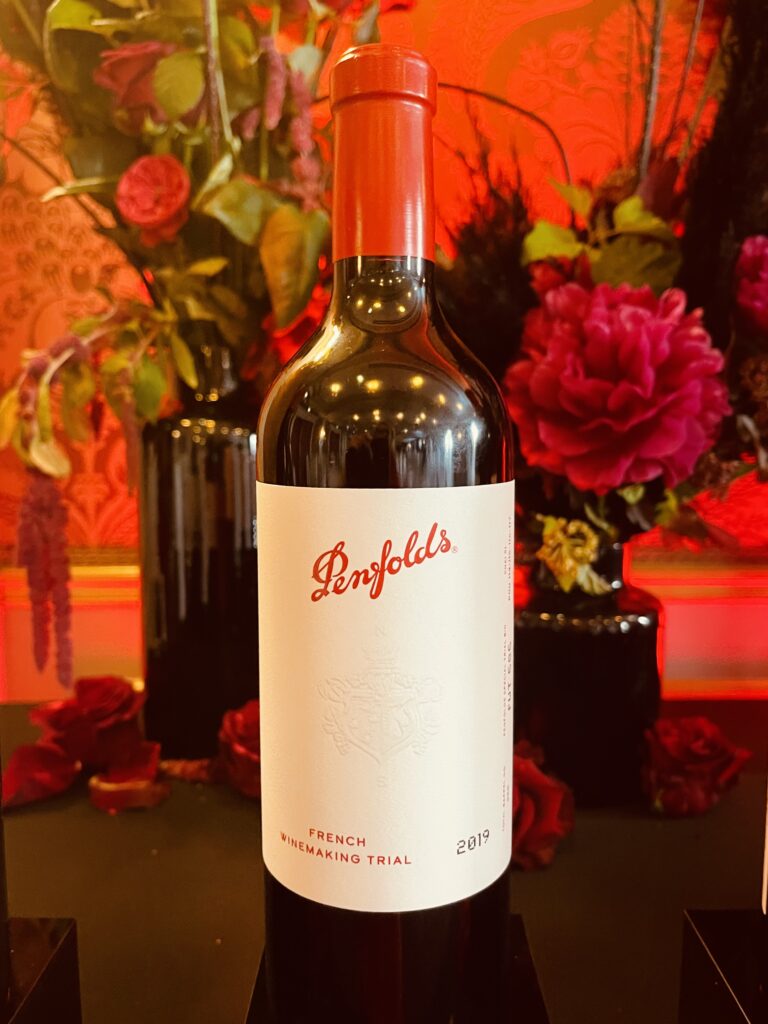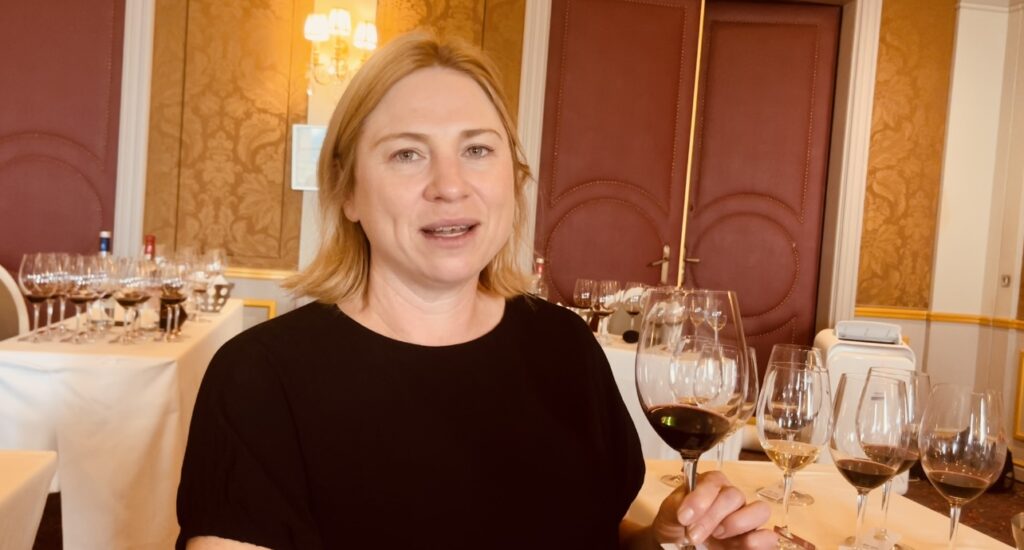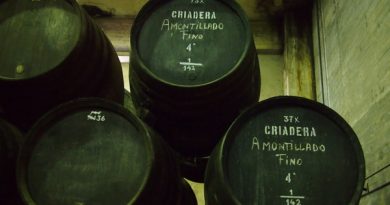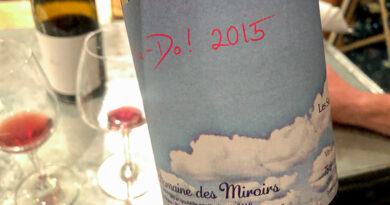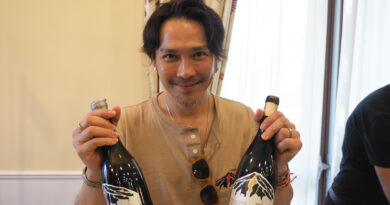Barossa meets Bordeaux with this new Penfolds x Dourthe collaboration wine, Penfolds II
Take Bordeaux master blenders, Dourthe, add 175 years of Australian patience, grit, ambition and skill – mix in that infamous Willy Wonker of Wine – Penfold’s Peter Gago and what do you get? Two nations – at wine making war throughout the 80s, have come together, made love and had a Gago baby – and guess what: she/he/them is wonderfully at odds with what went before
Part 1 Conception and birth of PENFOLDS II
Founded in 1840 Dourthe are one of the best wine producers in Bordeaux, famed for their brilliant blends. Their sought-after Essence is a radical mix of four Bordeaux appellations within which they own chateaux – it’s only made in the best years from the finest fruit. A mere 6000 bottles are produced, enough to whet the appetite of our antipodean explorers who, having already collaborated in Napa, were hungry to make a more audacious move. Penfolds II is a blend of 59% Cabernet from Château Belgrave, 29% Shiraz from Kalimna South Australia and 12% Merlot from Château Belgrave.
The Penfolds story began in 1844 when Mary and Dr Christopher Penfold bought 500 acres of prime land in newly founded South Australia on which to practice mixed farming. They called it The Grange. The eponymous wine came later in 1951 when chief winemaker Max Schubert, newly returned from Bordeaux, created Grange Hermitage. It was not an immediate success – it needed expensive cellaring and the management were not impressed. The project was shelved but Schubert was gifted with that most wondrous of attributes – unshakeable self-belief – so he kept on making it in secret. Reinstated in 1960, 1955 Grange went on to win the first of its 51 Gold Medals that same year.
Belgrave is a 5th Growth and has been under the Dourthe umbrella since 1979. It is the oldest and most prestigious vineyard they have, one single block of 54 hectares, a mix of gravel and clay, almost equally divided between two plots – one is slightly higher at 26 m, planted with Cabernet Sauvignon on gravel, the other at 23 m is Merlot on clay-dominated soil. There is also 5% Petit Verdot. 75% of the vineyard is planted at 10 000 vines per hectare.
Frédéric Bonnaffous, Director of Vignobles Dourthe, Peter Gago, Penfolds Chief Winemaker and Emma Wood, Penfolds Senior Winemaker all came together to answer questions about this collaboration. First we tasted through four Dourthe releases from 2016, especially chosen to illustrate the variability of terroir on taste. We then tasted Essence de Dourthe 2010, their flagship wine and very much the precursor for the Penfolds collaboration. Finally we taste and discuss FWT (French winemaking trail) 585, their deliciously flirtatious, hugely impressive collaborative preamble, with Emma Wood.
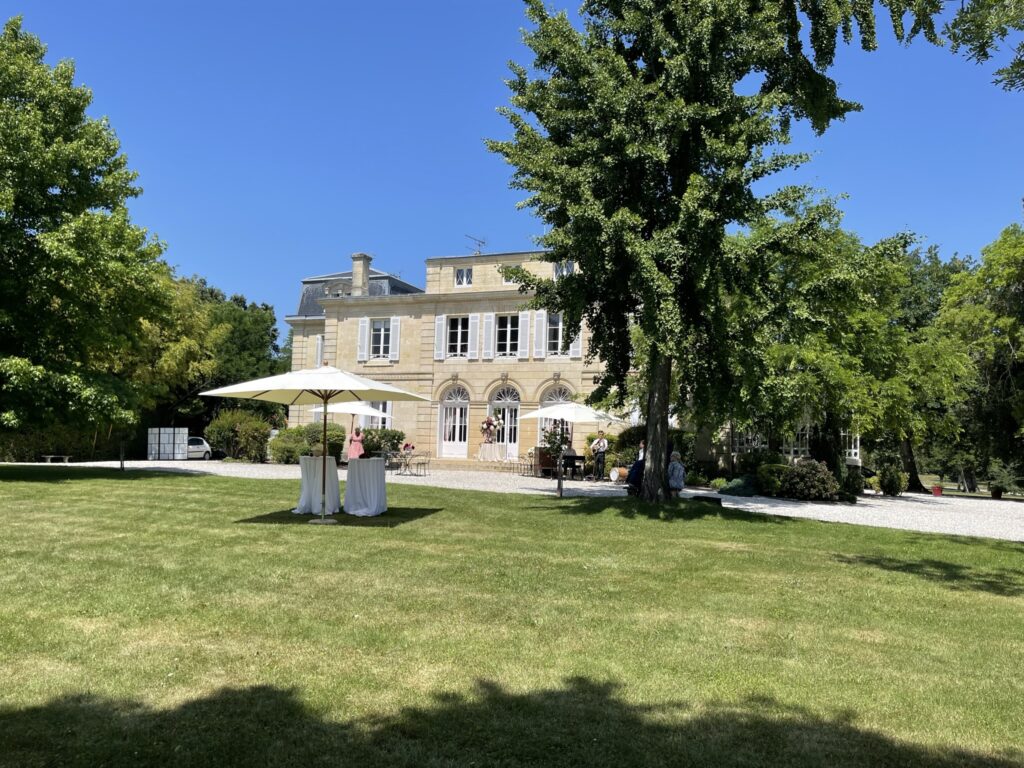
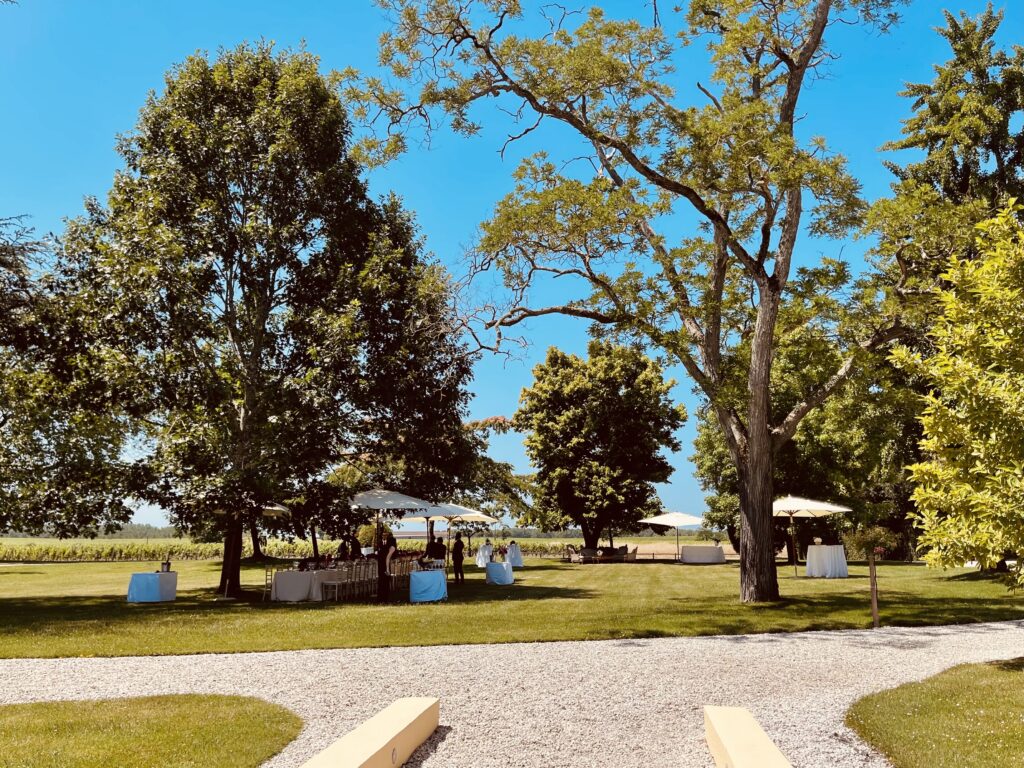
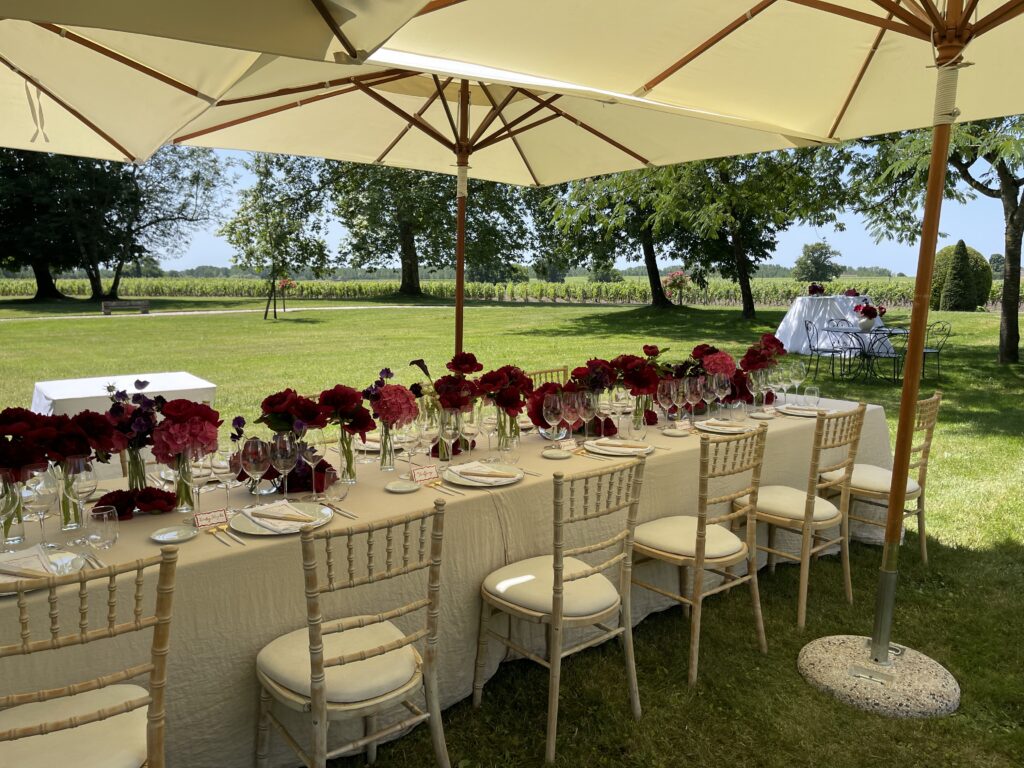
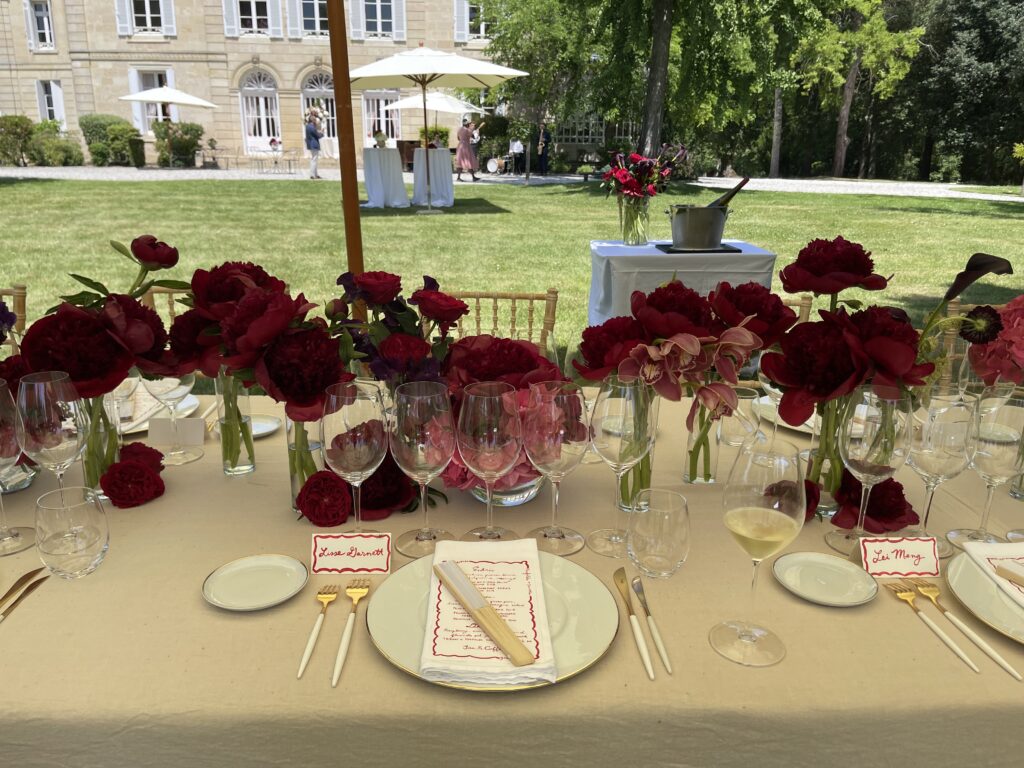
Château Belgrave
Frédéric Bonnaffous, Director of Vignobles Dourthe: The density is very high here, far above the requirement of the appellation of Medoc but it’s very important to bring all the complexity to the wine – On this side you have San Julien appellation – you are very near Chateau Lagrange – so we share the same characteristics – very fresh and very minty Cabernet Sauvignon. Like you have in St Julien. And on this side you have two other Grand Cru Classe from Haut Medoc, Camensac and La Tour Carnet near Margaux in the south.
We took over in 1979, More than 40 years ago, the first step was to restore the vineyards, that took us 25 years. We now have 33 different tanks of different capacities adapted to the parcels we have. You can see we have 6 different tanks for pigeage – very important for extracting very fine tannins, bought in 2007 – otherwise the winemaking is very classic.
‘they didn’t care where as long as the terroir was good for Cabernet Sauvignon. They can’t change the terroir but they can change everything else’ Dourthe on Penfolds
We love this Merlot and we use amphora because the tannins are very fine – here on gravel soil we are not expecting Merlot like you find on the left bank on clay and limestone, just purity and freshness, it just gives a touch of energy to the blend. We wanted to show how Merlot can be, not as big as Pauillac or Saint Estèphe – just freshness on the mouth – always freshness. We started to experiment with amphora 3 years ago – we like to go slow – we use used old oak for the ageing of the Merlot and we preserve the new oak for the Cabernet Sauvignon. We love our Merlot in used barrels or in amphora because the tannins are very fine, it’s not a big wine.
Cabernet Sauvignon is high density so that you feel the character of the vintage – it’s a little bit classic here – fresh – more peppermint flavours – this is a small vineyard and fresher than the Merlot – it’s very important for us to blend – this parcel has light delicate, fine tannins. The second parcel is a totally different expression of Cabernet Sauvignon – what is important is the complexity. Sometimes we blend very early – sometimes we keep the blocks. The second has more power, more character, the same place but the soil is completely different, more density, volume and power. More is packed into the wine because of the clay – more tannins, more colour, more everything. And there is just 100m between them.
We try the wines of Dourthe as a prelude to Penfolds II, all are of the 2016 vintage except the Essence which is 2010.
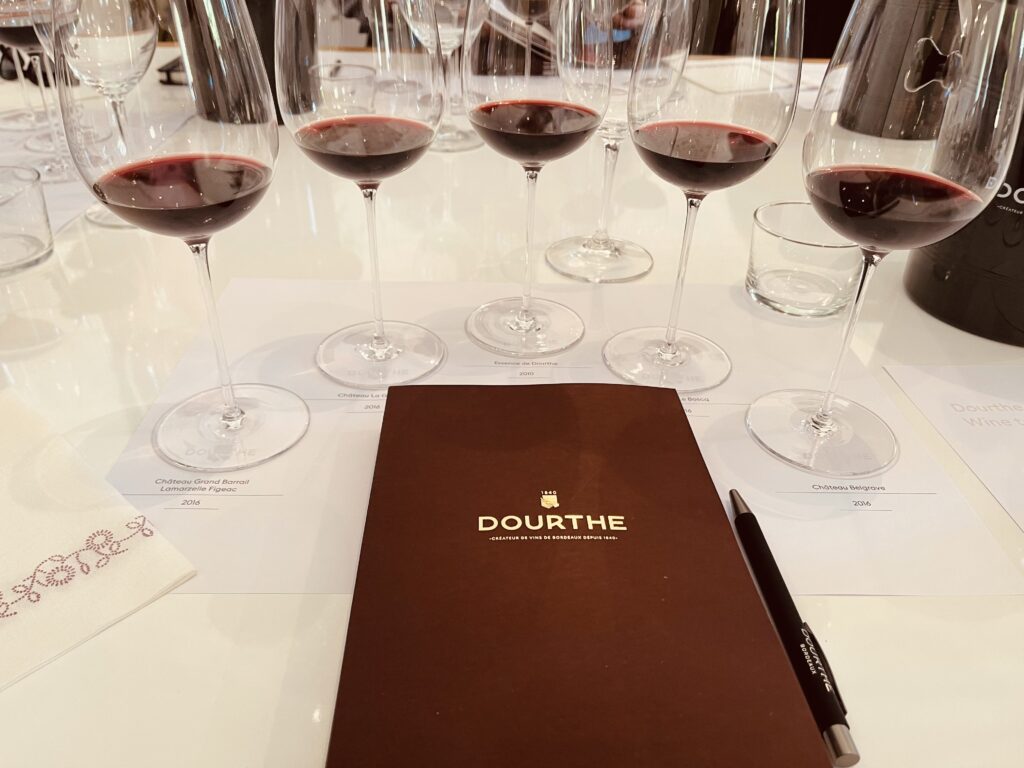
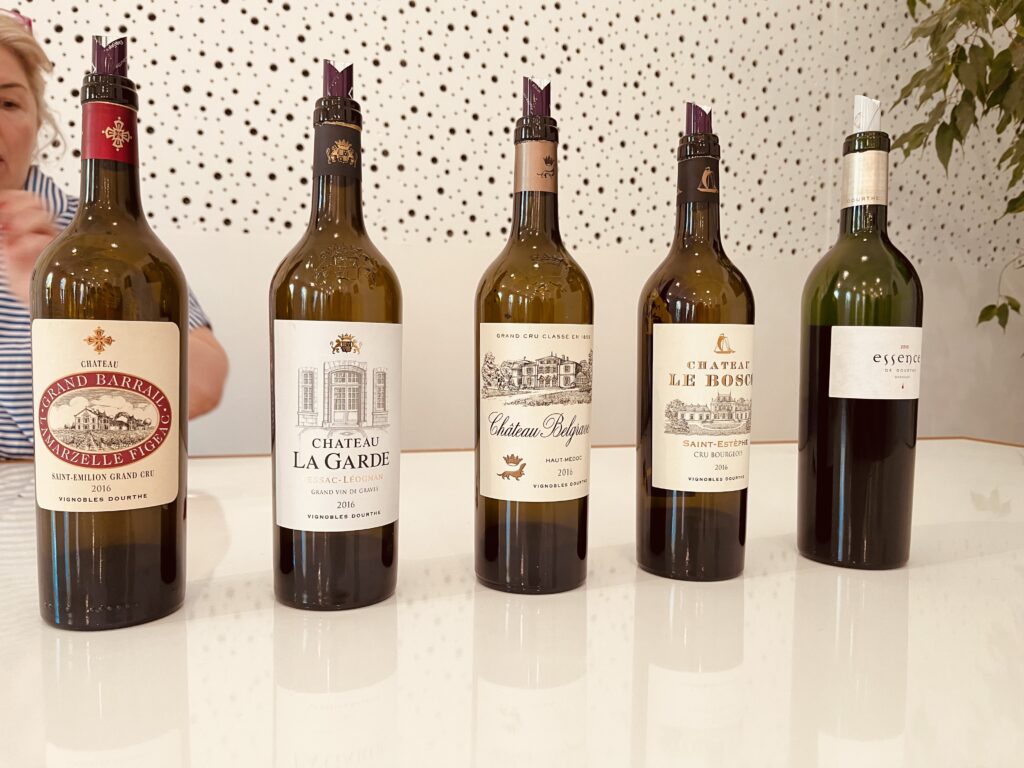
Château Grand Barrail Lamarzelle 2016
14% Alcohol. 70% Merlot, 30% Cabernet Franc LG: This wine has rich dense dark fruit, dark plum, leather, subtle cedar notes, cigar box, smoky cigar, long with a fresh sapidity, rich yet fresh with floral notes and insanely delicious fine tannins. The wine is well structured with lots going on. Long and super fresh. 94
Frédéric Bonnaffous: Here in Figeac we have a big part of Cabernet Franc – normally 70% Merlot – 30% Cab Franc from old vines – all the wines express their typicity, we don’t want them all to taste the same – the wine must express the terroir even on the same vintage because we have different soil, different climate – a different way of wine making for each product – 2016 is the vintage we are tasting for all these wines because it was a fantastic vintage in Bordeaux and after we will taste 2010 Essence de Dourthe because it was one of the best vintages here in Bordeaux. In Figeac we are not expecting a big wine – we are on gravel and clay. We are looking for delicate tannins – very fine – not a big wine but it has a gigantic capacity for ageing – it’s crazy, we tasted some 2004 last and it’s still there – the wine is very nice, because of the quality of the Cab Franc – it gives some floral flavours and its very structured with good ageing potential – it’s in St Emillion, near the village, that’s why this wine has finesse and elegance – it’s not super concentrated or a wine that is over extracted in terms of flavours and tannins – it’s very elegant. Cabernet Franc is a fantastic varietal especially with global warming. It gives violet notes and freshness and its very good especially in Saint Emillion. We use 25-30% new oak based on the power and capacity of the wine – we used it for the Cab Franc but not the Cabernet in Belgrave.
Chateau La Garde 2016
14% Alcohol. 52% Cabernet Sauvignon, 45% Merlot, 3% Petit Verdot LG: Conjures moist damp woodland in November, Lighter red fruit notes, red plum and black cherry tempered by a bloody iodine, meaty character – there is woodsmoke and a good acid line, deliciously dry tannins and a super sapid acidity. 94
LaGarde is on the South of Bordeaux, on the left bank and this is a good resume of Bordeaux – a blend of 50% Merlot, 50% Cabernet Sauvignon and a touch of Petit Verdot. In this property you can find all the best places to make wine – 60 hectares but you have all the best places to make Merlot here – on clay with limestone – and Cab Sauvignon on gravel, we can see the big difference of power – 27 different soils, a mosaic – we can always find balance no matter what the climatic condition – because of that mosaic. You can feel the power from the Cabernet Sauvignon and length but balance from the Merlot – it is a rich, powerful complete wine, there is a smokiness which is very typical of Chateau La Garde. In 2021 we adapted the cellar to the mosaic of the soil, now we have tiny tanks that correspond with each soil type – the wine is complex because the terroir is complex.
Chateau Belgrave 2016
14% Alcohol. 69% Cabernet Sauvignon, 28% Merlot, 3% Petit Verdot LG: Dark woodsmoke, liquorice, mint and silk – smooth and puckered on the finish but structured. Fresh, sapid, deliciously tannic. 96
Huge difference – we have plenty fresh peppermint nose – smoky and red and black fruit and the magic of the – Cab Sauv – 30% Merlot and Petit Verdot – the difference is huge between these too – Belgrave is half a degree cooler – you get fine tannin – fresh and incredible on the nose – this is typical of Cab Sauvignon on deep gravel that gives more linearity to the wine. Fresher – silky more minty and more expressive..
Chateau Le Boscq 2016
13.5% Alcohol. 48% Cabernet Sauvignon, 47% Merlot, 5% Petit Verdot LG: Super Sapid and sour, fresh and delicious with crunchy red fruit and a sublime acidity. Texturally, its light – diaphanous silk across the tongue. Cedar, cigar smoke, humidor, liquorice and woodsmoke. Tannins are elegant and fine. Long. 96
Chateau Le Boscq in St Estephe is in the northwest– its always cooler in winter, the frost comes earlier but it’s warmer in the Spring – we rarely get the frost thanks to the river moderation. This kind of soil can preserve water content and its cooler in summer, warmer in winter but its wetter so we have different diseases and its windy because of the river. It’s the furthest north in St Estephe – overlooking the river – the microclimate is great thanks to that – it’s the top terroir in the area – only 18 hectares, bought in 1985. Its next to Château Climens part of the Medoc. We are not far from Château La Garde but the nose is very different – we have cedar, cigar box, it gives a mix between clay on gravel – gravel on top , it’s a mix between different characters – and massively powerful, huge!
Essence de Dourthe 2010 14.5% Alcohol. LG: Elegant yet rich and concentrated. Woodsmoke, plum, sweet fruit, sour cherry, blueberries, incense, silky tannins and spice, sour cherry. Superbly silky, sapid and age worthy 96
This is not made every year – its very important because it made the link between Penfolds and us. We first met with Peter in 2013 and we tasted this wine – Essence de Dourthe. Essence de Dourthe is a blend of wines from the best places in our properties and we want to show the best vintages possible in Bordeaux because in Belgrave we have one of the best places for Cabernet Sauvignon on Gravel in Le Boscq we have fantastic clay, St Emillion for Cab Franc, in Lagrave for Merlot obviously clay on limestone – we do the best wine blend possible – We started in 2002 with the 2000 vintage – we selected the best soil, the best parcels from our top four Bordeaux chateaux. This vintage was very hot, lots of power, we don’t make it every year, we want to do our best. We only produce 6000 bottles. It’s the masterpiece of our vineyards, made from the very best wine, there is a lot of work behind it!
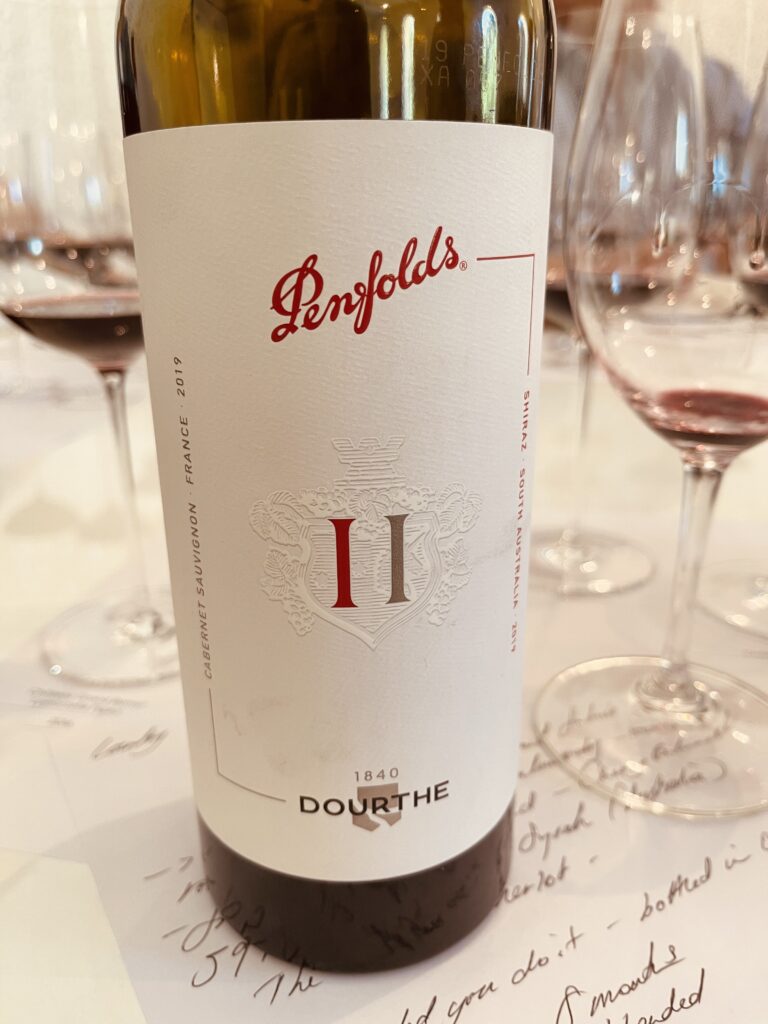
PENFOLDS II, Wine of the World 2019
“Two Hemisphere’s aligned” Peter Gago
LG:14% Alcohol. 59% Cab, 29% (Chateau Belgrave) Shiraz, 12% (Penfolds, South Australia) Merlot (Chateau Belgrave), 18 months in French (70%) and American (30%) new oak. Fresh and crunchy with red fruit, red cherries and underripe English strawberries, peppered and sour – radically different from the other blends we have tried today – fairly angular in the way of a fine young oaked Nebbiolo but with much texture and promise of future greatness. There is sweetness in the blackcurrant and woodsmoke, the tannins are fine and silky, the texture too is light like diaphanous silk on the tongue. A deliciously subtle ghostly bat’s squeak of mint wafts about the blend. 94
Peter Gago, Penfolds Chief Winemaker: This magical blend that we love in Australia Cabernet and Syrah, it is done differently and thank you for official tasting this first globally ANYWHERE
LG: Tell us the story of this wine.
Frédéric Bonnaffous: We made the first tasting here in 2019 and I presented Peter with all of the plots that could go into the blend, so we had 40 different plots – we made a shortlist – a selection. After – a fantastic thing! Covid arrived so almost all of the rest of job was by Zoom – we were Zooming winemakers. We sent each other the samples and we said we love it, we don’t love it – we made a selection of different varieties. We tried it with Cabernet Sauvignon from Australia, with our Cabernet, with more Merlot – with less Merlot and at the end it came together like magic. We are not looking for just a big wine, we were looking for the very best, that was very important to us, to find the blend between Cabernet and Syrah. 40 options – Cab, Merlot, Petit Verdot..
LG: How many Syrah options?
Peter Gago – Hundreds, we had some in French oak, Barossa matured, blended Shiraz, American oak.
LG: Where you always thinking Kalimna Syrah?
PG: Half the time we didn’t know what was in which bottle, it wasn’t done completely blind but almost. The samples we tried – I zoomed into the ones I loved, blackcurrant and blue cheese but I think that Frederic’s first fear in the early days was that we were going to create a big bold strong Australian French wine. But I think there are subtleties to this wine – there’s an aliveness to this wine, it’s not about boldness – its balanced and structured and characterful. A lot of things came out – it was great, it was just trial and error – we didn’t have a template. It was just what works best in the way of balance.
FB: What’s interesting in this wine, Cab Shiraz works on the vintage 19 but here we have different vintages every year here in Bordeaux and the vintage variation is enormous.
PG: There is a 2020, it’s very different. This is not a one off. That’s all I’ll say! Working with like-minded people with a worldly outlook who yes are very ruled by what can and can’t happen here, so many rules but there is still a lot of wriggle room and we tried to stretch things a little bit, not a qualitative sense. This is very different for us but it comes from a group who have already made Essence – which is like GEEEEE – from Saint Esteph, From St Emillion, from Pessac Leon, what a brave group..
LG: What are the proportions in the Penfolds II blend?
59% Cab, 29% Shiraz, 12% Merlot –
LG: So what is the proportion between south Australia and France?
PG: Its 29%
LG: So you flew wines to Oz?
PG: 95% Most of it was done in France, those wines were advanced in barrel. One of things I find in Australia and perhaps here with Cabernet is what you see is what you get, we cover all options in Australia. Grenache can do two things in barrel in Oz – it can nose dive, and the same with Pinot – I think that’s why people look at Grenache and Pinot Noir in the same way but I think what we had here was an affinity from day one. We had a fairly good idea about what we wanted and it was that balance structurally, less about flavour and bigness.
LG: Frederic how do you feel about American oak?
FB: On the maturing, the second ageing of the blend – I prefer more French, Peter likes a touch of American. We must find a balance between our points of view and evolve because the quality of the American oak is 2,3,5 steps higher than you can find in France, in France American oak is really poor in quality unlike the quality you have in Australia. I don’t find the character of American oak when Peter gives me wine to taste from Australia. I didn’t find the character I expected because for me it was really a caricature of oak. The American oak was very different to what we were expecting.
PG: There have been a lot of refinements in Penfolds winemaking about tannin management and oak selection so French oak, American oak – it’s really not that apparent – obviously there are differences but it’s not that apparent anymore, great American, great French. It’s about seeking out like-minded coopers who give us the best – and we have oak trials every year – if this looks like all American oak we’ve made a mistake, Grange is a good example – 100% new oak every year – I think when people are tasting this wine, they are tasting something so different, it won’t be like a chromatograph.
Wine of the world is a key phrase for us. It’s shorthand for a whole new way about talking about wine. Think of Bin 149, our Napa wine, we didn’t know if we could legally blend Napa Cabernet with wine that came from elsewhere and we came up with the expression wine from the world – with the Bin 149, we just sort of dabbled and we had this beautiful wine – this 149 from the best vineyards in Napa but I offended everyone – I said this wine is beautiful, all these high notes, but it’s all arms and legs, it’s not intact. Fortunately that morning we were grading – we tried lots of Cabernets and nothing worked so we tried some leftover Australian Cabernet, Australian Shiraz and it was – MAGIC, we added about 15% of A1 Grade 1 leftover Cabernet from Australia and BOOF this wine came together and so we went back to Australia with one big question, can we do this legally. Fortunately we didn’t go to jail. That’s where wine of the world came from. Cabernet from here WOW is like being in Disney land, what a choice – I’m talking from a purely wine loving futuristic perspective – ITS REAL, IT’S A REAL THING…
Whilst that’s not disrespectful to the French winemaking traditions, it’s a little bit different. We do things in a little bit of a different order, none of the techniques are strangers to the winemakers in France however the way and the order that we are doing them is where the difference comes. There is a lovely contrast in the Penfolds II wine – the French component is in his house style. His ambition is in those wines blended with Penfolds Australian wine.
Frederic: We have a very traditional winemaking philosophy but because of the blend I think complimentary. And when we are looking for this blend with Peter we want absolutely to have two sides in the wine, the really traditional Cabernet Sauvignon from Bordeaux made in tank and after ageing in barrel for 14 months, gravel and clay soils and after we have the Shiraz part with totally Penfolds style. What is great and interesting in the project, the blend of the 19 is not fixed – we are very free with that because of the effect of the vintage, especially in Bordeaux. We are ready with Peter to change everything, the blend, the percentage, the variety to continue this project, the idea is to have the real expression of the real place, the top terroir, the top expression of Bordeaux in one vintage and the same thing in Australia so we can blend the two top mixed variety and soil and climate on each vintage. That’s what makes it so interesting..
PG: I’m smelling this and thinking it smells a bit like Penfolds and Frederic is smelling it and thinking… well I’m hoping anyway..
Frederic– Smells like a nice job, a nice wine.
FWT FRENCH 585 WINE TRIAL
FWT (French winemaking trail) 585
LG: 14% Alcohol. 53% Cabernet Sauvignon, 34% Merlot, 13% Petit Verdot. A wine made entirely under the Penfolds protocol in France. 14 months in French (circa 40% new) and American oak (circa 15% new). Taught yet rich with dark chocolate coated plum, cinnamon, soy, blood, liquorice, cedar, cigar box and woodsmoke. So silky and sublimely sapid. The tannins are fine and dry – dusted in cocoa – finishes chewy, a moist postprandial cigar. 96
PG: Back in 2018 we told the world that we had bought a winery in Macon, just outside of Margaux. This wine was under Penfolds control so when we picked the grapes, the oak barrels we used, the fermentation, the delestage twice a day was in the Penfolds house style or ‘Penfolds protocol’ as we call it.
Emma Wood, Penfolds Senior Winemaker: There is no set formula, there is no recipe yet. We are trying to be curious, to experiment, to find the best fruit possible. I think what I have learnt in the 3 vintages so far is that the variation in the varieties is the star of the show here in this region. It can dramatically alter. I came with the mindset it would be a Cabernet-based wine however I discovered that French Merlot is amazing. In Australia we don’t have any Merlot that looks like this. It was a really important part of the blend, the freshness, the generosity that that delivered in the trial blend was really important and then another variety that we don’t use so much in Australia is Petit Verdot, that brought intensity, structure, that tannic drive. That to me just fits really well so there was no intention necessarily to use those three varieties and in certain vintages I can certainly imagine the percentages will change a lot. Frederic is correct in terms that with the varieties in these regions, the star of the show is not always going to be the same.
Frederic: The Petit Verdot is really interesting and we tried with Peter to use some in our 2019 and it didn’t work at all. Because we have a lot of power with the Cabernet Franc, Cab Sauvignon and the Shiraz, the Petit Verdot and the Merlot are not matching. It is really interesting to see that the Merlot is really interesting in clay with limestone soil in Bordeaux so this is one key for the future because we love Cab Sauvignon but we love Merlot when it’s not heavy and it’s not jammy.
